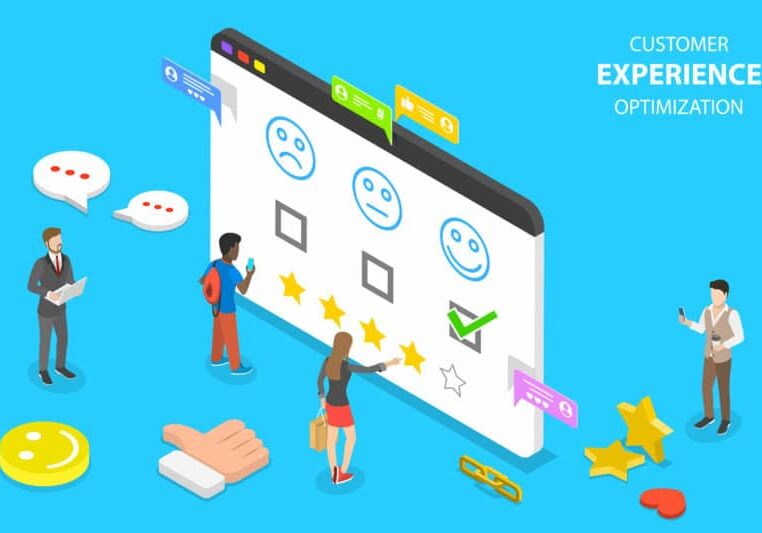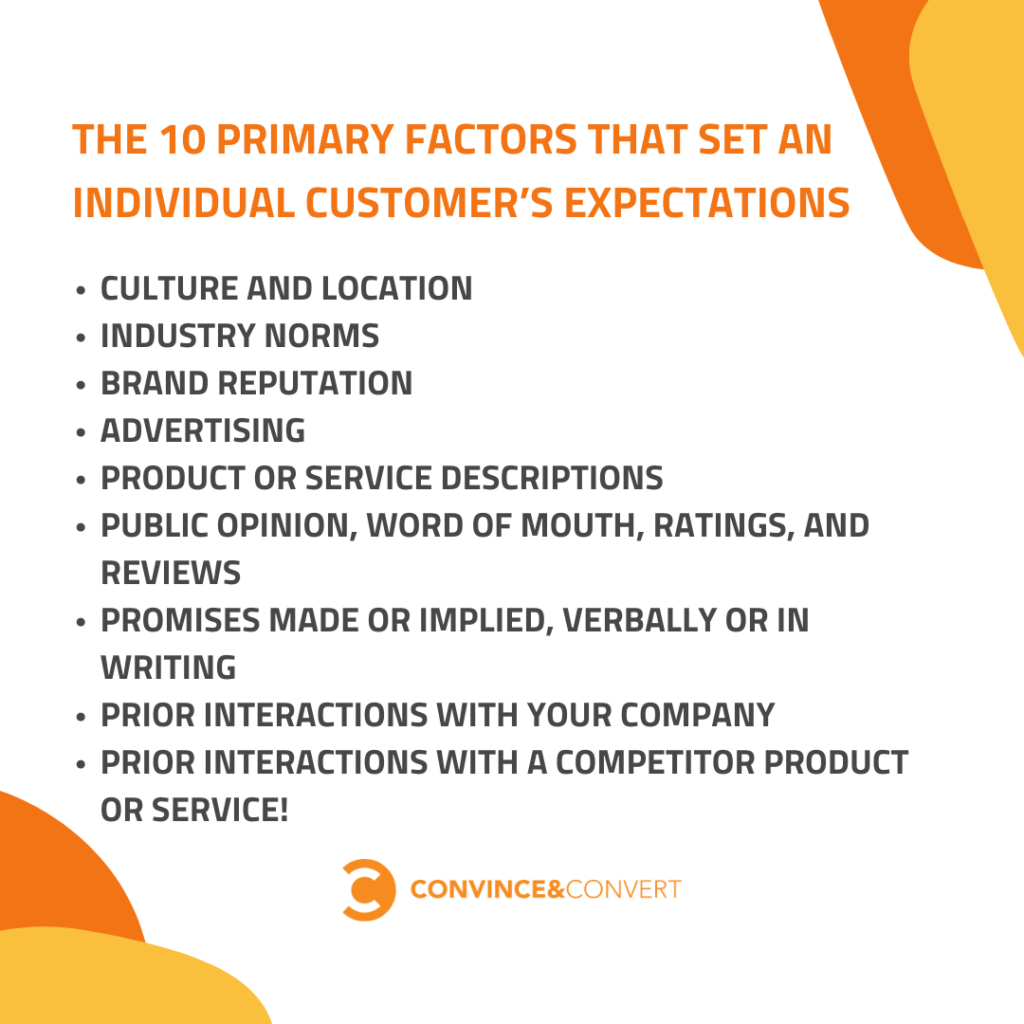Customer Experience vs Customer Expectations

By Prebuilt Sites Team
March 7, 2022
There are two types of CX you need to be aware of: customer experience and customer expectation. While they’re two different things, they are inseparably related. Customer experience focuses on all the interactions a customer has with your brand. Content they consume, advertisements they read, communications they receive from the company and customer representatives they communciate with. Customer expectation focuses on how well those experiences met their expectations. It’s important to keep in mind that while there are many things you can do to give your customers an incredible experience with your brand, sometimes things happen that are simply out of your control. Everyone has varying levels of patience and understanding. Some companies have excellent reviews about how well they handled shipping delays while others have negative reviews for having shipping delays in the first place. It’s important to control the things you can and handle every challenge with grace. The customers who you want to stick around will. If you have any questions about customer experience or customer expectations, reach out to us at Prebuilt Sites or The BBS Agency. We’d love to help you out!
You probably have a CX problem. You may not know it, or want to admit it, or may not know how pervasive it is, but you sure need to find out if you expect to make any improvements in it.
Full stop. Let’s reexamine that opening sentence. “You have a CX problem…”
However which, if not both, of the CXs is suffering under your watch? Customer Experience and/or Customer Expectations? These two CXs are very different yet inseparably related.
What is Customer Experience (CX)?
For any organization Customer Experience includes:
- Advertising to consumers
- Content they consume
- Digital experiences in which they interact or observe
- Non-digital experience in which they interact or observe
- Communications from the company
- Company representatives with whom they communicate
- The products and services they purchase
- The customer service they receive
- Friction, or lack thereof, throughout the customer journey
- Brand reputation and expectations
In short, it’s the totality of all interactions a customer has with your brand.
Customer experience is not just a set of actions. It also focuses on feelings. How do your customers or prospective customers feel about your brand? At every customer touchpoint, you can improve—or destroy—how your customers feel about you. – Oracle CX
What is Customer Expectation (CX)?
The other CX, Customer Expectations is another topic entirely, but it is inextricably woven into the customer experience and relationship.
Suppose your customer orders an item with the expectation it will be delivered in 5 days. When it arrives in three days, your customer is surprised and delighted. The customer expectation has been surpassed and all is good.
But if that same order arrives in seven days, the customer expectation has not been met which can lead to disappointment, dissatisfaction, less-than-stellar ratings and reviews, and even anger if that delivery was time-sensitive to the recipient. Neither scenario is impacted by the packaging, presentation, or performance of the item ordered—in this case, it all hinged on a delivery date.
And unfortunately, that seventh-day delivery may have had nothing to do with your operations. Weather delays, labor shortages, cargo ships backed up at the ports, there are a litany of things that can delay delivery after the product leaves your warehouse.
This goes far deeper than shipping delays. Customer Expectation can be thought of as the delta between what your customer expects to happen and what does happen (the other CX). In that simple statement lies two giant problems.
Problem 1: Customer Expectations Vary from Customer to Customer
You’ll see below a list of the 10 primary factors that typically influence or define customer expectations. But an individual’s exposure to each of those items can lead to a very different level of expectation.
It’s not just that your marketing and operations are aiming for a moving target, you are aiming at a bunch of different targets and at different ranges.
In your own experiences, take something as simple as waiting in line, no one’s favorite pastime. How long do you wait before you become edgy, then agitated, then angry? At what point do you just leave the line and abort the mission?
Consider how long you would wait in each of these scenarios:
- The checkout line in a grocery store
- Tickets to a popular show or event (do people still wait in lines for such things?)
- A table for dinner at a popular restaurant
- The Department of Motor Vehicles
- In the little examination room at your doctor’s office (I have walked after waiting 45 minutes.)
You’ll have your own answer for each of those and each would also be entirely based on the situation. And it’s the same for everyone else because we all have differing degrees of patience and expectation.
Problem 2: Customer Expectations are Not Entirely in Your Control
Good communications can go a long way to setting customer expectations. But it can’t go all the way in every situation.
Your messaging must be on point and consistent all the way through the consideration funnel, for initial awareness in advertising through documented warranty and return policies. The expectation messages must permeate every point of customer interaction from the brand’s social media posts to the website to call center scripts.
Inconsistent expectation messaging is a fault that will crack a customer experience. Be sure to audit all of your expectation messaging.
With the best, clear, and consistent expectation messaging firmly in place, you are still dealing with people who have had their expectations shaped (or distorted) by a number of other factors, at least 10 to be precise.
Source: Convince & Convert
From that list of 10, how many can your company control?
Yes, it’s maybe half… maybe. Let that reality set in for a moment. Recognize that if half of the influencing factors on your customer’s expectations are out of your control, it is doubly important you absolutely nail the factors you can control. That effort is what will manage and eventually close the expectation gap.
Reconciling the Customer Experience and the Customer Expectation
Entire books have been and will be written on good customer experience so for our purposes, let’s agree that it is an essential dance between marketing messaging and operations. (We’ll include the actual product or service as part of operations.)
Recapping what we’ve covered above:
- Much, but not all, of the customer experience is in your control
- About half of the customer expectation is in your control
Do This:
- Seek continual improvement throughout the customer experience, beginning with the least-good touchpoints first. Formalize the improvement process and methods for measurement against established goals. Set deadlines for measured improvements.
- Audit the expectations messaging for all your customer touchpoints.
- From your audit findings, improve the accuracy and empathy of communications customers about what they can reliably expect to happen, that is in your control. Be true to your promises—you will be held to them.
- Gather data on the customer experience and expectation gap. Include as part of your customer satisfaction process the questions related to expectations and experience. As you see patterns emerge, or easily solved one-offs, target those gaps for improvement.
- Be realistic in what you can actually deliver on a nearly 100% basis.
The Safe Bet Has Always Been to Under Promise and Over Deliver
We all have our memories of customer experiences not measuring up to our expectations. Some are forgettable, maybe even forgivable, and some are strongly remembered and changed buying behavior.
There is one particular cruise line I will never patronize again. That story isn’t of interest to you, but the experience did change my purchase behavior, permanently.
Make sure you are aligning your customer experiences with their expectations to permanently solidify their purchase behavior with your company, and never consider the competition.
Originally posted on Convince & Convert.


